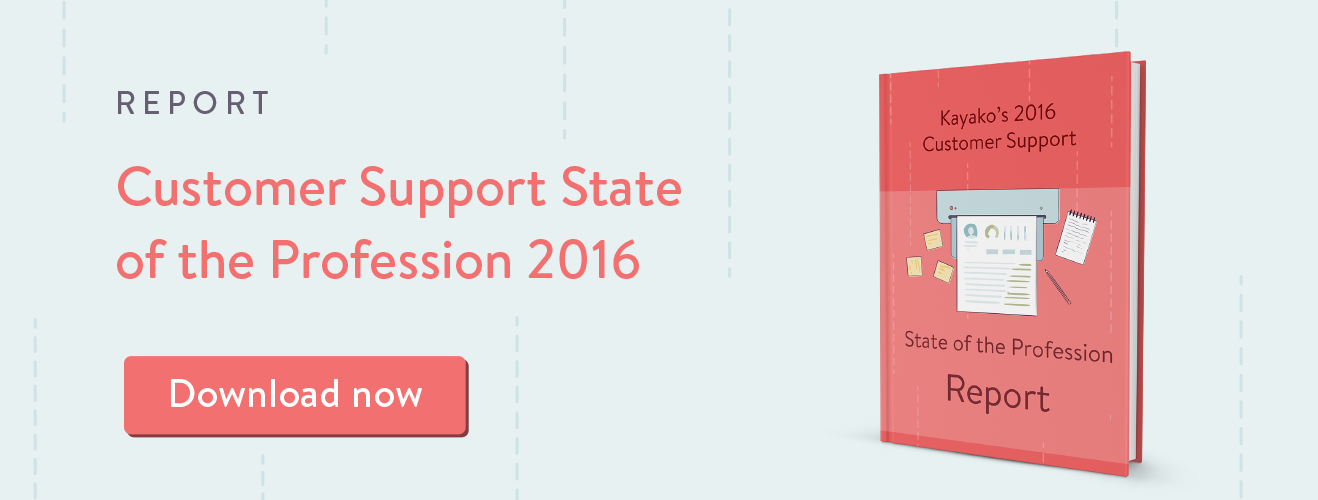Have you ever felt like an outsider when dealing with a different department?
Maybe you feel slightly intimidated by the sales team, or don’t fully understand what the engineering team is doing. It seems like the accounting team doesn’t ever want to talk, but you can’t get the marketing team to shut up!
You’re relieved when it’s time to return to the comforting arms of the customer support team.
In all organizations, there’ll be a need for different departments to work together sooner or later, and this is especially true of customer support or service teams who often need to collaborate with engineering, product, sales, marketing and even accounting.
In customer-centric organizations, all departments should work together for the benefit of the customer. It’s not just down to the support or service team to make sure customers are satisfied, and similarly other departments should be given insights into how their work impacts customers.
Fostering teamwork and collaboration across departments can be tricky, especially if certain teams or individuals aren’t used to working together. Sometimes cross-departmental projects can struggle with friction among individuals or lack of cooperation among teams.
Often the reason for this is a simple lack of understanding of the pressures faced by other departments, and different perspectives held by team members from other disciplines.
So, how can we foster better collaboration across departments?
The key is empathy.
If we understand the challenges that others face, listen to one another, and communicate our understanding more effectively, frictions will reduce and cross-departmental teamwork will be easier.
Watch your words
One best practice when dealing with different departments is to take care with the way you communicate concerns. As a customer support team, you’re used to talking happy and dealing with difficult situations when it comes to customers.
You should use the same level of care when talking to your colleagues.
Be careful not to pass blame or accuse colleagues for problems that you are facing. Instead, show you understand why the problem is happening from their end and try to find a way to resolve it together. For example:
Unempathetic: It’s all because of your department that we’re not able to complete the project. You are messing up every single system out there.
Empathetic: Guys, here is a list of the issues that we are facing trying to complete this project. Can we work together to see if there is a way we can try to minimise the impact?
Here’s another example that demonstrates the opportunity to empathize with your colleagues whose difficulties are causing issues for your team:
Unempathetic: Your team has been sitting on this issue for so long and there’s been no update. This is a nightmare for us – customers keep asking us about it and we have nothing to tell them.
Empathetic: I understand that your team has had a lot going on lately and your workload has shot up. But I hope you understand and respect the fact that we’re completely dependent on you to get this fixed before we can move forward.
This small change in attitude can work wonders. It can help get more work done by spending less time debating among departments, and will help to keep people happier in both teams, as it reduces bad feeling and the chance of conflict.
Be open with your work
Another way to connect with your colleagues in different departments is to let them know what is going on in your team, and find out what they’re working on too. Understanding what challenges each team is facing helps you to empathize with one another and to understand what might be a cause of friction in the future.
A bi-weekly showcase can be a really helpful way to share this information. Departments can meet and share the work they are currently occupied with. It may help departments to understand how closely they are interlinked, and how their work affects each other’s performance.
It’s a great way to showcase hard work done by your team and is an opportunity to give and receive feedback from other departments.
When I did my internship at the Financial Times we would have interdepartmental showcases every two weeks. This helped us to share ideas across teams on how things could be handled and how certain projects would impact other teams. This helped us all work together more efficiently and productively.
Showcases like this can really help customer support teams to understand their company’s product as it evolves over time. For instance, gaining regular insight into development from the product team will mean that by the time it is launched, the support team will understand the product inside out.
This kind of in-depth knowledge will lead to better customer service and can also help to improve the product as it gives the support team the opportunity to share their feedback and customer feedback with the product team.
How does all of this impact customer service?
Cooperation and coordination among departments matters a lot when it comes to customer service. Customer service is the customer’s main point of contact with your company, so if they have an issue with any part of the business (whether that’s product, billing, or updating their account) they will first go through customer service or support.
This means that the service or support team needs to work with these other teams in order to fulfil the requests of the customer.
Let’s look at a very common scenario: A customer comes to the support team with a problem. A support agent investigates, and realizes they need to involve other teams in order to solve the problem. If there is good collaboration between various departments, the problem can be fixed very smoothly.
However, if there’s no cooperation and other departments assume it’s solely up to support to deal with, the problem will take much longer to solve and the customer is more likely to leave with a bad impression.
Remember: Customers don’t deal with departments; they deal with your product and your company.
Truly collaborative customer service
We all expect customer support teams to have the tools they need to find all the information they need about a customer from all touch points (known as collaborative customer service). But wouldn’t it be great to have that same level of collaboration from all the people involved in that customer’s experience as well?
Imagine how drastically improved the customer’s experience could be if all departments shared their expertise to help solve every issue faced by customers.
If we can simply get rid of those department boundaries and focus on collaborating to solve customers’ problems, we can look forward to next-level customer service, where customer issues could be handled in just a snap!
I’m sure you’ve heard of the phrase “Unity is strength” – well, the same goes for departments working together. If all departments work together, the results are bound to be amazing.
“Competition makes us faster, collaboration makes us better!” – Anonymous
The takeaway on team building
Unless you overcome that internal friction among your departments, you’ll never be able to provide the best level of service to your customers.
Teams need to work together and share the same goals. Whether it’s sales, engineering, support, development, everyone should be geared to help and empathize with one another. Once they understand and respect each other, providing good customer service will be a cakewalk.
The mantra is simple: Treat each other like an internal customer!


